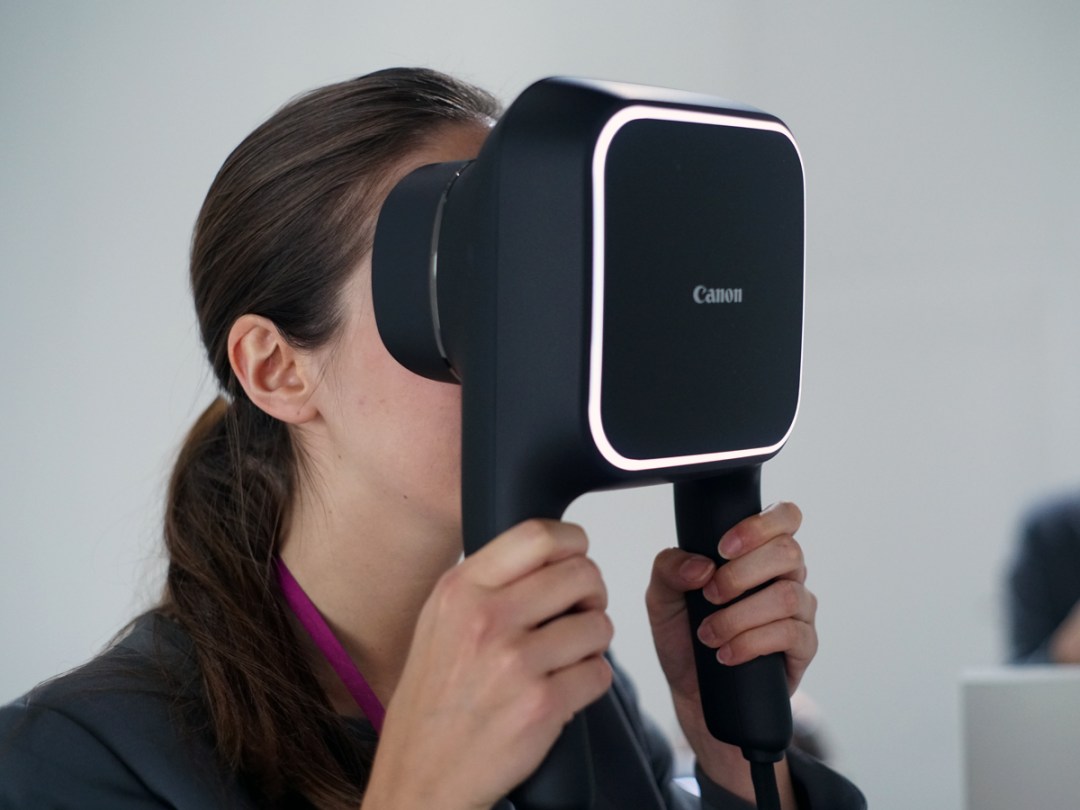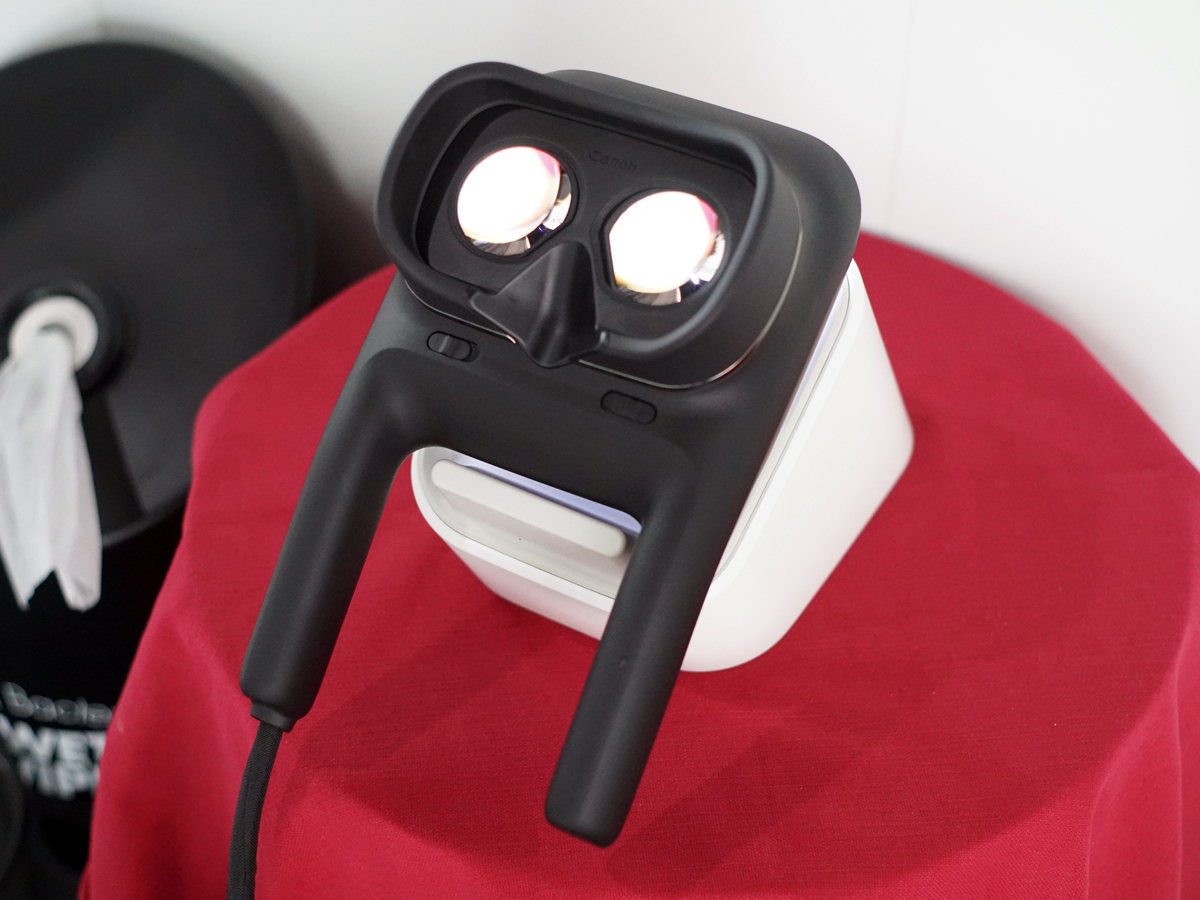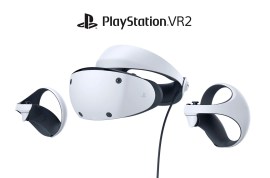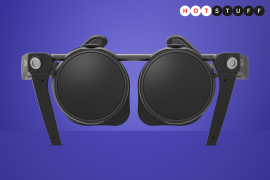Eyes on with Canon’s handheld VR headset
It’s bigger than most, yes – but that’s because its image quality is so darn good

The Canon Expo only rolls around once every five years, and while much of the technology on display isn’t necessarily the sort of thing we cover here on Stuff.tv (look, we love surveillance cameras and big poster printers as much as the next website, but…) there are a couple of things that grabbed our attention.
One is Canon’s prototype virtual reality viewer, which takes a different tack to Oculus Rift, Google Cardboard and the HTC Vive by using handles instead of a strap. Basically, it’s too large and heavy to make a comfortable wearable headset, so instead you grip the handles and hold it up to your face.
The positive thing about its hefty size is that it allows for a much larger, wider angle display than other headsets we’ve tried: a pair of 5.5in panels with a total resolution of 2560 x 2880 and a viewing angle of 120 degrees (the HTC Vive and Oculus Rift will have an 110-degree field of view, while Sony’s PlayStation VR prototype has just 100). That’s a lot more pixels than, say, the Samsung Gear VR, and in my demo with it I didn’t notice the pixel structure of the screen at all – something that can be an immersion-breaking issue with other VR goggles.
I watched a series of short 360-degree videos (all shot with Canon cameras and camcorders set up in rigs, natch) and the image quality was universally fantastic: detailed, bright and vivid (doubtless Canon’s lens expertise helps out here). The most striking had a flamenco band surrounding me while they played and sang. A pair of headphones delivers accompanying multidirectional audio too, which completes the experience quite nicely.
The headset is large, admittedly, and it’s not something you’ll be using for lengthy periods of time. And, as your hands are required, it’s not going to suit the same kind of gaming applications as most VR headsets. A Canon rep I spoke to suggested that smaller wearable versions could well be on the way, but as it stands this prototype could develop into something that sees use at museums and exhibitions, or in educational circles. It’s certainly something worth keeping an eye on. Or even two eyes on.





